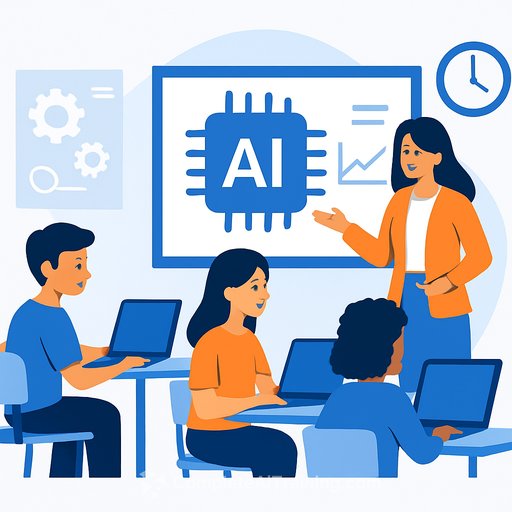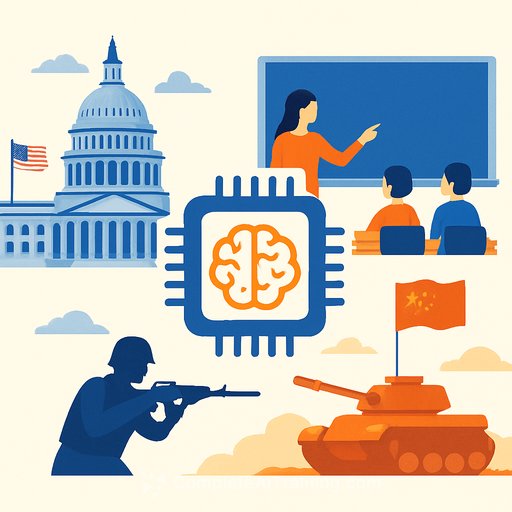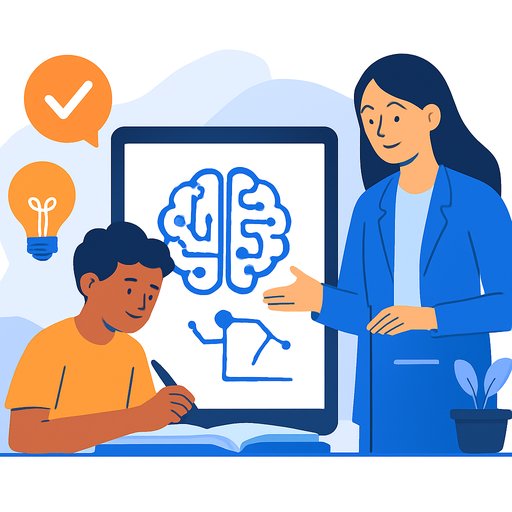AI hit schools. Now what?
MIT's Teaching Systems Lab, led by Associate Professor Justin Reich, is helping educators by listening first and sharing what's working - and what isn't - in real classrooms. Their new guidebook, "A Guide to AI in Schools: Perspectives for the Perplexed," collects stories and strategies from more than 100 students and teachers across the U.S.
The goal isn't a rulebook. It's a starting point for thoughtful decisions. As the authors put it, writing a definitive guide to AI in schools right now is like writing a manual for aviation in 1905. We're early.
What the guidebook is (and isn't)
It's a tool to help K-12 educators, leaders, and policymakers gather evidence, test ideas, and compare notes. It surfaces examples of AI use that might become sturdy practice - or might fail in the wild - with the humility to admit we won't know which is which for a while.
It's not prescriptive. No one can tell you "the" right AI policy for your district in 2025. The work is to learn in public, document what you try, and improve together.
The big questions schools are facing
Two pressures hit first: academic integrity and data privacy. Teachers also worry about "bypassing productive thinking" when students offload core practice to AI. If kids skip the exercises that build content knowledge and context, learning suffers.
There's also measurement. How do we detect AI-enabled shortcuts, and how do we design tasks that still develop thinking, writing, and problem-solving?
A practical way to move forward this semester
- Assemble a small working group (teachers, students, admin, caregiver voice). Set a 6-8 week timeline.
- Draft 3-5 principles to guide decisions: integrity, privacy, equity, transparency, and usefulness for learning.
- Pick 1-2 contained pilots (e.g., feedback drafting in ELA, code review in CS). Define what "good" looks like.
- Set classroom norms: disclose AI use, cite prompts/outputs, reflect on what AI changed in the work process.
- Redesign at least one assessment to reduce answer copying: in-class reasoning checks, oral defenses, process artifacts, or spaced mini-assessments.
- Teach AI literacy explicitly: fact-checking, bias spotting, comparing outputs, and writing effective prompts with guardrails.
- Protect privacy: use tools with clear data policies; avoid student PII in prompts; get opt-ins when needed.
- Collect evidence: student work samples, teacher notes, time saved, performance changes, and student reflections.
- Share findings with your staff in a short brief: what we tried, what seemed promising, what we're changing next.
Podcast: The Homework Machine
The Teaching Systems Lab also produced "The Homework Machine," a seven-part series from the Teachlab podcast. Each episode digs into a live issue - adoption, engagement, post-Covid learning loss, pedagogy, and even book bans - to shorten the time between idea and classroom practice.
It's built for educators who need timely, field-tested insight, not a perfect answer a year from now. The series was also adapted into a public radio special.
Avoid the old mistakes
We've been here before. Schools spent heavily on smartboards with no clear evidence of improved outcomes. Early web literacy advice taught students to distrust Wikipedia and chase superficial "credibility markers," which didn't hold up.
AI didn't go through normal procurement - it showed up on students' phones. That's why patience, small bets, and honest reporting matter. As Reich puts it, we're "fumbling around in the dark," so let's test our way to the light.
What you can contribute now
- Run short interviews or surveys: How are students actually using AI? Where does it help, where does it hurt?
- Collect artifacts: drafts with AI annotations, prompt histories, and comparison pieces (with/without AI).
- Track metrics that matter: quality of reasoning in writing, error rates in math/code, time-on-task, and student confidence.
- Build PD around real cases from your school, not generic demos. Keep it hands-on and reflective.
- Center equity: ensure access, accommodations, and language support; avoid creating an AI "advantage gap."
Helpful resources
- Common Sense Privacy Program - check edtech vendors' privacy practices before classroom use.
- UNESCO: Guidance on AI and education - policy frames and risk considerations for schools and systems.
- Complete AI Training: Courses by job role - curated AI upskilling paths you can adapt for staff learning.
The mindset that works
This guidebook treats every AI idea as a hypothesis. Try it. Document it. Share what you learn. Keep what improves learning and drop what doesn't.
Educators didn't choose AI's arrival, but they can shape how it's used. Let's race to answers that are right - not first.
Your membership also unlocks:






